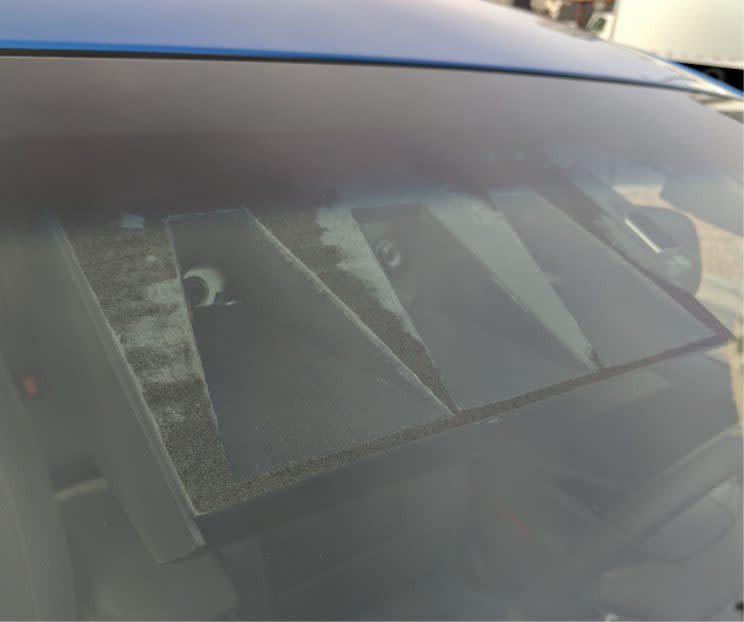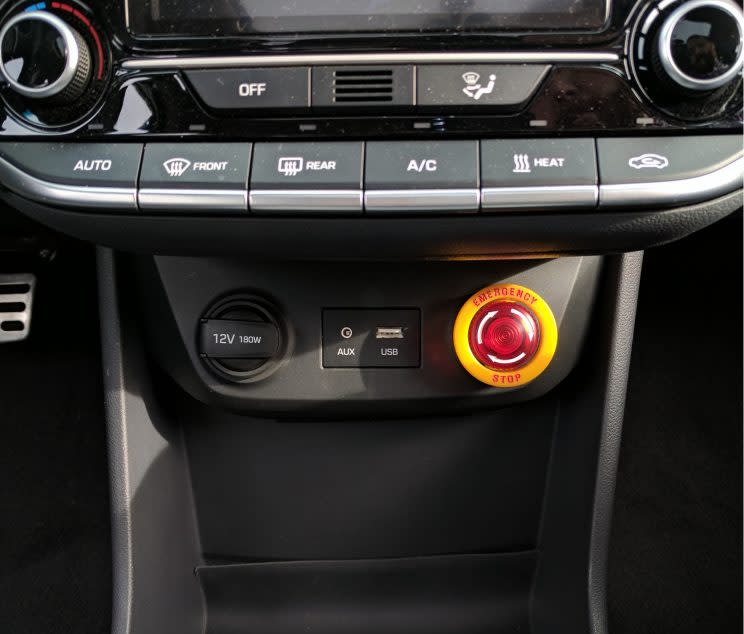We took a ride in Hyundai's self-driving car and survived
Hyundai is showing off its prototype Ioniq self-driving car at CES 2017, the massive consumer tech show in Las Vegas this week. What better way to find out how well this autonomous vehicle operates than to put my life in this robot’s cold, unfeeling metaphorical hands?
Okay, it wasn’t exactly that dramatic, and that’s exactly the point. Traveling around Hyundai’s pre-set 2.8-mile loop in the Ioniq felt about the same as being driven by a cab driver, you know, just without the awkward conversation.
Hyundai sends the Ioniq out along a pre-set route because of the kind of technology the company uses in its autonomous vehicle. See, Hyundai is using a system that takes advantage of LiDAR (light detection and ranging) sensors that can “see” where the car is on the road and utilize detailed mapping data.

The car uses its three LiDAR sensors built into its front bumper and compares where the car is with where it should be on the map. Using that, a series of cameras that can see lanes, pedestrians and other cars, as well as a highly accurate GPS, the Ioniq is able to stay on course with an accuracy of 50 centimeters. That’s pretty good.
Ford (F) actually uses a similar system in its own autonomous vehicles to help them navigate snow-covered roads.
The fact that Hyundai is running its vehicles on the same router over and over again may not seem impressive, but in truth it’s actually quite incredible. That’s because while the road might not change, the cars and pedestrians around it do.
During our trip, the Ioniq detected pedestrians crossing in a crosswalk when it could have made a right turn on red and knew to stay put. The car also managed to make a right turn on red when it was clear at a different intersection and correctly identified when it needed to come to a stop at red lights.

While a number of companies are working on autonomous vehicles, Hyundai’s offering is especially interesting, because the self-driving vehicle is built using an existing car, the Ioniq, and modern-day technology. And rather than looking like a car with all sorts of gadgets glued to the top that you wouldn’t be caught dead driving around in, the Ioniq looks like a normal car.

But don’t get your hopes up just yet. Hyundai says it will take until about 2020 for its autonomous technology to let us drive around without having to pay attention to the road and for regulators to put the proper laws and regulations into place.
Still, riding in the Ioniq proves that attractive, functional autonomous cars aren’t far off.
More of Yahoo Finance’s CES coverage:
Lenovo’s Smart Assistant uses Amazon’s Alexa to control your home
What to expect this week at CES, the world’s biggest gadget show
Fiat Chrysler’s Portal concept is an upgradable car for millennials
The Norton Core is a beautiful Wi-FI router that protects your digital home
Samsung’s new washing machine will save you time and aggravation
The biggest busts from the world’s most renowned gadget show
Email Daniel at [email protected]; follow him on Twitter at @DanielHowley.

